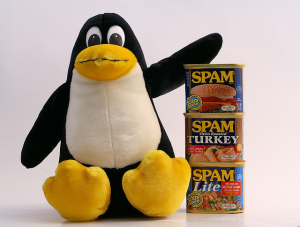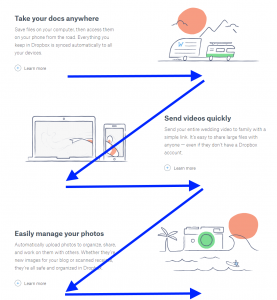Back in the good old days, the proverbial shopkeeper is said to have known her customers directly and was able to address them as individuals while engaging in sales conversations and chit-chat that best fit each individual’s interests.
But in reality, for any sized business except a corner store in a tiny village, a typical customer base looks more like the picture below — masses of clients, and no way to keep track of each client’s hot buttons.
The email broadcast era
So, email marketers working at real businesses started communicating with subscribers by broadcasting newsletters instead of trying to engage in relevant and personalized interactions via email. Cookie-cutter newsletters, “from one to many,” had to suffice. The wisdom of the day was that email was so much less expensive than direct mail – so who cared?
Yet, this led to unsubscribes, low open rates, little engagement, and poor response. Plus, ISPs started to additionally punish the spray-and-pray approach with lowered inbox placement rates because they deducted that recipients didn’t perceive the messages to be of value.
The “personalization” era
In response, marketers and email vendors thought that they could mimic more individualized conversations by adding “personalization” — better described as mail merge techniques that, for the most part, just slap a “Dear John,” in front of the email message. Yet, email recipients have long understood that mail merge-type “personalization” is far from actual personalization. They can see right through it, and tend to ignore it. They see an email marketer that is just going through the motions of pretending to care about each customer as an individual.
Yawn.
The segment targeting era
More forward-thinking marketers have therefore applied techniques from database marketing to their outbound email and improved practices by segmenting their audiences and sending segmented email newsletters and promotions to each group. That has improved engagement and response rates somewhat, but the messages remain cookie cutter for each of the buckets of customers since people and their interests are much more unique than “segments.” And it requires too much manual effort to take this approach for every possible segment.
So even though marketers know that response rates are typically higher the more fine-grained their segmentation is, it simply is neither practical nor cost effective to go beyond a few segments with manual content creation and curation.
There has to be something smarter!
In this age of self-driving cars, smartphones, and big data, there has to be something smarter than merely segmented and targeted email with mail merge!
And there is.
Enter automated content personalization
Automated content personalization provides a major improvement over traditional email marketing “personalization.” It automates the assembly and delivery of millions of unique emails to millions of unique recipients by making it possible to dynamically generate email content with the articles, products, videos, coupons, etc. that each individual is most likely to engage with.
The results, when done right, speak for themselves:
- 2-3x increase in engagement, e.g. email open rates, click-through rates, and resulting downstream revenue
- 25-50% reduction in subscriber churn
- Streamlined campaign management and significantly reduced effort vs. manual content creation and curation
How does it work?
Automated analytics on audience website behavior is the underlying secret sauce. So, automated content personalization solutions combine traditional inputs into email (e.g. CRM, preference center data, etc.) with Web behavior tracking capabilities. These solutions use machine learning to automatically build up a real-time profile of each audience member’s intent and interests. For example,
- Is a visitor to a website for cooking recipes (who is also an identified email contact) consistently clicking on vegan, or vegetarian, or carnivore recipes?
- What meats or vegetables does the visitor favor?
- Or is it a particular chef’s recipes that he or she is following?
- And what recipes do people with a similar profile also like on that site?
Predictive personalization solutions then automatically populate each newsletter with the kind of content that matches each recipient’s interests. The automatically generated content can seamlessly live alongside regular email content and marketing offers.
As a result, when you send a million email messages you send a million unique ones, each one tailored to the individual who receives it — a task that would be impossible without automation!
What it takes to get it right
A lot of sophistication and predictive intelligence go on behind the scenes, though, in order to make automated content personalization practical and successful. For example, you need:
- Governance and business rules to avoid sending the same article to a subscriber who has already read it on the website
- Intelligent filtering to avoid recommending articles or products that are already featured elsewhere within the same email
- Text analytics that automatically analyze the content on each Web page to identify the context of interactions while eliminating the need to manually meta tag each digital asset; this would rarely lead to accurate and granular insights that make for successful personalization.
- Analytics that map as many website visitors as possible to their email contact profile based on cookies, registrations, and click-throughs from past emails
- Frequency limits to avoid contact fatigue
- Top notch privacy practices based on “permission to market”
All of that sophistication is needed in order to achieve one thing: An email recipient who has a good experience with the resulting message so that it becomes a win-win for the recipient and the marketer.
So RIP “personalization.” Long live true personalization!
(132)






